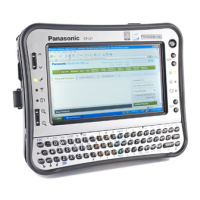107
Troubleshooting (Advanced)
A peripheral device does not work. z Install the driver.
z Contact the manufacturer of the device.
z When operation resumes from sleep or hibernation, devices such as a mouse
may not function properly. In this case, restart the computer or reinitialize the
device.
z When is displayed in the Device Manager, remove and insert the device. If
the problem persists, restart the computer.
z The computer may not recognize the connection/removal of some devices, or
may not operate normally with some devices.
Operate the following steps.
A Click (Start) - [Computer] - [System properties] - [Device
Manager].
z A standard user needs to enter an administrator password.
B Select the applied device, and remove the check mark for [Allow the
computer to turn off this device to save power] in [Power
Management]. (This item may be unavailable for some types of
devices.)
The connected mouse does not work. z Check the mouse connection.
USB floppy disk drive does not work
as a boot drive.
z The operation is confirmed by using Panasonic CF-VFDU03U USB floppy disk
drive (optional) when the computer boots from USB floppy disk drive.
z Connect the floppy disk drive directly to a USB port of the computer. Do not
connect it via a USB hub or USB connector of the Cradle or the Mini Port
Replicator.
z Set [Legacy USB Support] to [Enabled] in the [Advanced] menu of the Setup
Utility (Î page 90).
z Set [Boot Option #1] in [Boot] menu of the Setup Utility to [USB Floppy Disk].
(Î page 91).
z Turn off the computer and connect the USB floppy disk drive, and then restart
the computer.
You do not know the address map for
IRQ, I/O port address, etc.
z You can check with the following procedure.
A
Click (Start) - [Computer] - [System properties] - [Device Manager].
z A standard user needs to enter an administrator password.
B Click [View] - [Resources by type].
Connecting Peripherals

